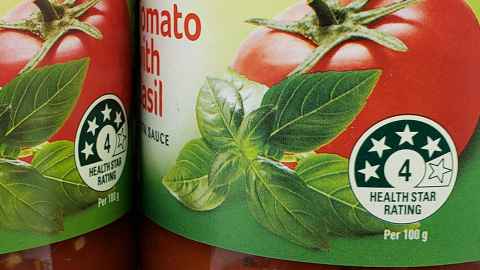Supermarket stars make our food better
23 November 2020
Star ratings on food packaging help shoppers choose nutritious food. Stars also spur manufacturers to make healthier products, a study shows.

Star ratings on food packaging are intended to help shoppers choose nutritious food. Turns out the stars also spur manufacturers to make healthier products, a new study shows.
``Now, if only we could make the star system mandatory on all foods,” said Professor Cliona Ni Mhurchu, of the University of Auckland.
The Health Star Rating system, introduced in New Zealand and Australia in 2014, is intended to help shoppers consume less of the salty, sugary, unhealthy food that is fuelling obesity epidemics in both countries. Ratings range from 0.5 stars (least healthy) to five stars (most healthy).
A recent Trans-Tasman review of the system recommended that 70% of packaged foods should feature the stars by 2024. That compares with an estimated 21% in New Zealand in 2018.
Now, if only we could make the star system mandatory on all foods
In the new research, a team from the University of Auckland, the University of Melbourne, and the George Institute for Global Health asked, how has the star system changed the behaviour of the food manufacturers?
The study, published in PLOS Medicine, analysed packaged products available in four major New Zealand supermarkets annually from 2013, and in Sydney supermarkets from 2014.
Checking on how the nutritional value of individual products changed over time – that’s all products, not just the ones with stars – the researchers found that those displaying stars were more likely to improve in both countries.
In New Zealand, products with stars showed a 4% decline in salt content and a 2.3% decrease in sugar content. Mostly the gain came from the least healthy products improving, said Professor Ni Mhurchu, who leads a Population Nutrition Research Programme at the National Institute for Health Innovation.
Lead author and University of Melbourne Research Fellow Dr Laxman Bablani said even modest changes were steps in the right direction.

To give one example, a popular flavoured cracker now has six per cent less fat and roughly 10 per cent less sodium per 100g than before it adopted the star labels in 2016. It jumped from 1.5 to two stars.
Unsurprisingly, manufacturers are less willing to put stars on the least healthy products. In 2019, around 15 per cent of products that scored two stars had labels in both countries, compared to more than 35 per cent of those that scored four stars and above.
The Australia and New Zealand Ministerial Forum on Food Regulation introduced the voluntary front-of-pack star system. Senior author and University of Melbourne Professor Tony Blakely said: “There is little incentive for manufacturers to label unhealthy foods voluntarily."
Media contact
Paul Panckhurst | media adviser
M: 022 032 8475
E: paul.panckhurst@auckland.ac.nz